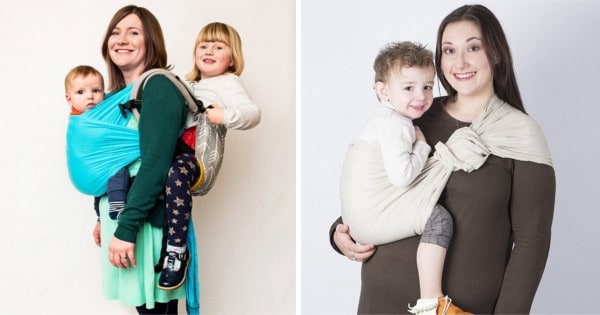More and more moms are opting to carry their toddlers around constantly on their backs in slings saying the practice, known as “toddler wearing”, helps moms bond with their children and even makes kids learn and develop faster.
Hayley Halford is a mom-of-two who, whenever she heads out, has both her 4-year-old, Finnella, and her 6-month-old son, Indiana, strapped to her back.
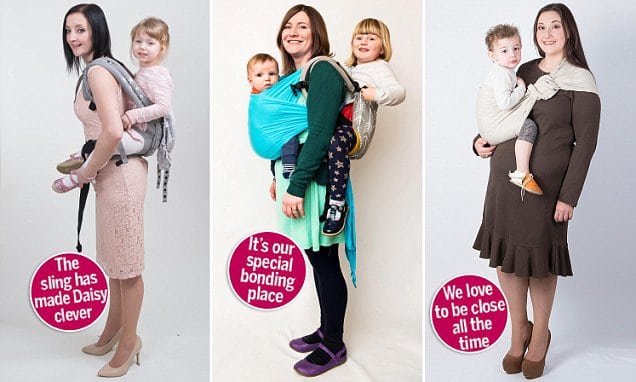
The total combined weight of Finnella and Indiana is a whopping 56lbs and while Hayley laughs that she looks like a “pack pony” when she’s out with her children, she says the “aching joints, wobbly legs, and strange looks are a small price to pay for this unique closeness”.
“When I carry Finnella on my back, our heads are at the same level and she can look around and talk about what we’re both seeing,” says Hayley, “It’s so lovely to be able to be so close and chat away.”
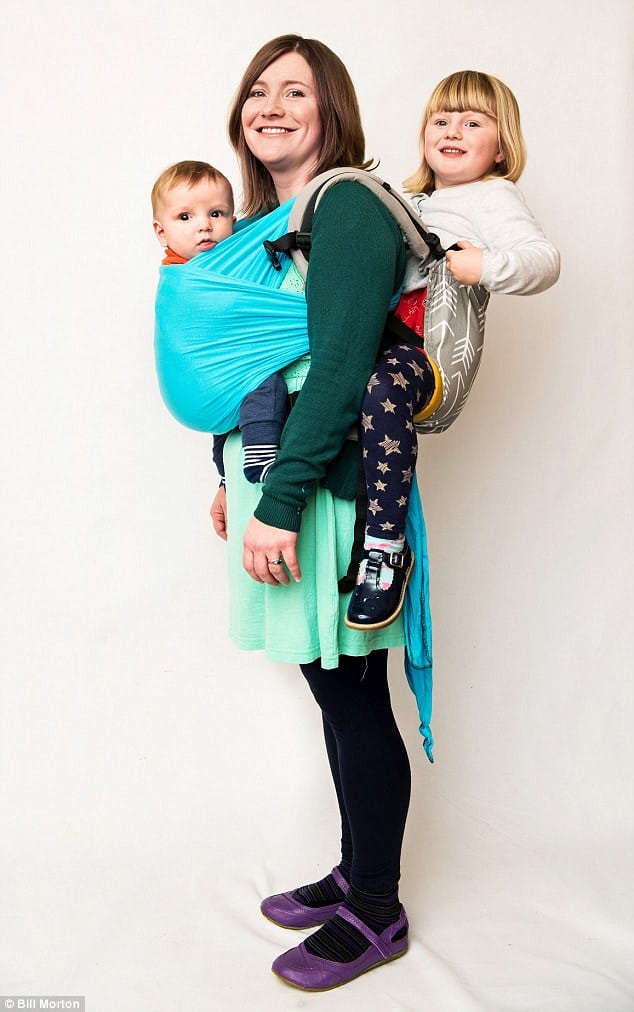
Toddler wearing is the latest trend among moms who are shunning the pushchair in favor of attachment-style parenting, which also advocates co-sleeping and feeding on demand.
“It provides special bonding time,” says Hayley, “It works especially well when we’re in busy places such as out shopping, when it can be quite intimidating for Finnella to be down on the ground.”
“I just lift Finnella onto my back and she’s immediately distracted and soothed and will go limp and quiet. It’s her safe, secure space, and she can fall asleep there if she’s tired.”
“The slings are fantastic for spreading the weight evenly across my back but, after too long, especially if I’m carrying both children, it is quite hard,” she admits.
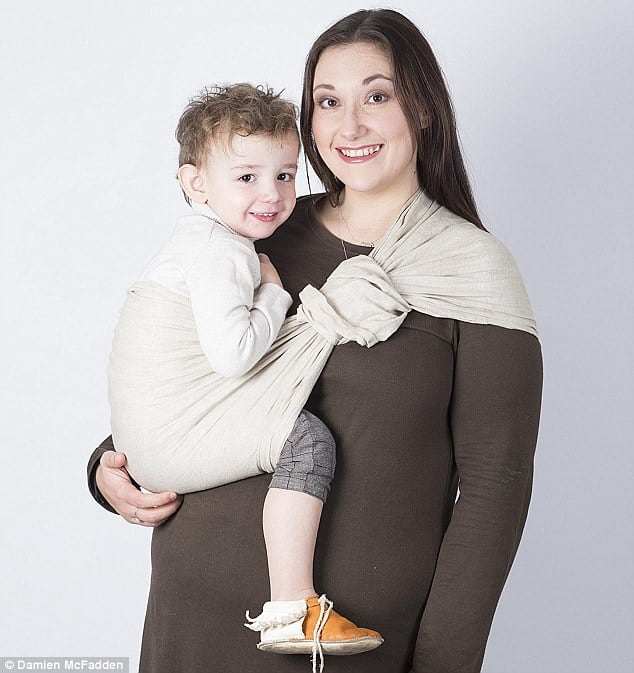
“[People] do see Finnella in the sling and ask, ‘Can she not walk?’ or they make a comment about her not getting enough exercise. Finnella can walk for a long time and is very independent. I know they think I’m mollycoddling her, but people expect kids to grow up so quickly these days. She’s still so little.”
Although infant carrying isn’t new, with some cultures keeping youngsters strapped to their moms well into toddler-hood, the practice is less popular in the West where parents are encouraged to advance children to independence as soon as possible.
And Michelle McHale, founder of Attachment Parenting UK, says the movement helps teach parents to trust their instincts and be sensitive to their child’s needs.
“The sling provides older children with a secure space to come back to and is really just a comfortable, practical way of cuddling and holding your child for longer, which can only be a good thing.”
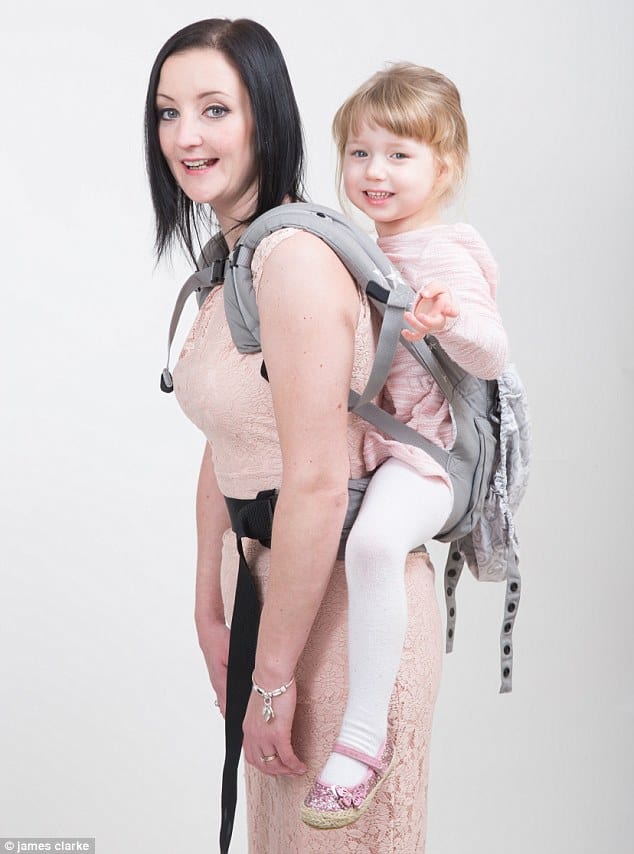
“It builds strong psychological and emotional habits within the child for comfort and gives them positive memories and associations.”
Another mom, 27-year-old Lauren Gordon, believes carrying her son is the reason for their closeness.
“I love the strong bond we have, and that has definitely been added to by babywearing,” she says, “Just being able to hold him and cuddle him for longer periods when he wants to be close is great, and it wouldn’t be possible without a sling.”
“I spent £1,000 on an iCandy pram when he was born, but I found myself rarely using it. Nowadays, the longest time I’ll carry him is two hours and he’ll only ask to go in the sling about two to three times a week, as he loves running around.”
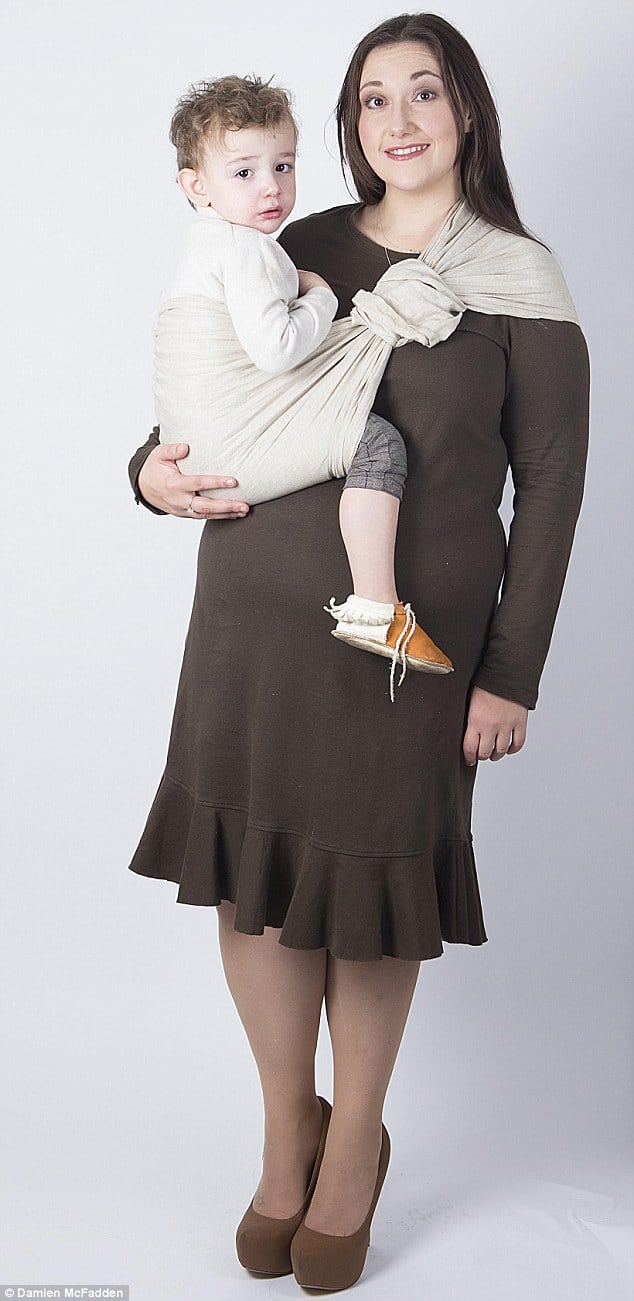
“It’s so snuggly in [the sling], it’s our special time and we both love it,” she adds.
Experts are divided about the practice of toddler wearing, with some saying that the added weight can damage the mother’s spine and has little to no effect on child bonding. Others argue that closeness to a child can only be a good thing, and that as long as the weight is evenly distributed, there should be no stress to the spine.
“A mother should decided whether to practice babywearing, and how long to do it, based on what the baby seems to want and what is compatible with the mother’s needs as well,” says obstetrician gynaecologist Dr Amy Tuteur.
“Some children want to be held, some want to explore. There’s nothing you can do while babywearing that you can’t do equally well without it.”

